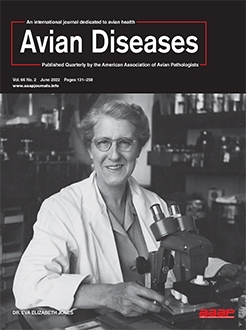Vitamin D is a hormone that can be ingested or synthesized in the body when skin is exposed to ultraviolet radiation (UV), typically from sunlight. In captivity, birds with no sunlight exposure may develop vitamin D deficiencies that may contribute to hypocalcemic conditions, even when fed a diet supplemented with vitamin D. An initial pilot study with Hispaniolan Amazon parrots (Amazona ventralis) conducted approximately 18 mo prior indicated there were significant differences in the 25-hydroxyvitamin D (vit D) plasma levels between the resident parrots (indoor-only housing) and a new group of historically outdoor-housed parrots (new parrots) 5 days after the arrival of the latter at our institution. The goals of this study were to determine if vit D, ionized calcium (Ca2+), and ionized magnesium (Mg2+) levels changed from baseline values (taken 18 mo prior) in the new birds as well as to compare those values to those of the resident birds over time. The treatment was a change in husbandry for the new parrots (no UV exposure and diet as provided for the resident parrots). To accomplish this, the authors compared vit D levels in the same two groups of birds that were fed the same vit D–fortified diet and given no access to natural or artificial UV light exposure for 18 mo. The resident parrots (N = 9) had been housed indoors for approximately 20 yr with no exposure to natural or supplemented UV light. The second group of birds (new parrots; N = 8) had been housed outdoors prior to the initiation of the pilot study in 2016 and were fed a similar—but not identical—diet prior to their arrival. Plasma samples were sent to the Michigan State University Diagnostic Center for Population and Animal Health for analysis. Test results demonstrated differences between the two groups of parrots, largely attributed to the decrease in vit D plasma levels in the new parrots over time to values equivalent to those measured in the resident birds. Differences were seen in plasma Ca2+, while no differences were demonstrated relative to Mg2+. We discuss these findings and suggest that plasma vit D levels decrease in the absence of UV light, even when animals are maintained on a vit D–fortified and balanced diet.
How to translate text using browser tools
27 April 2022
Plasma Vitamin D (25-Hydroxyvitamin D) Levels in Hispaniolan Amazon Parrots (Amazona ventralis) Housed Indoors Over Time
Marlie Nightengale,
Rhett W. Stout,
Thomas N. Tully Jr
ACCESS THE FULL ARTICLE

Avian Diseases
Vol. 66 • No. 2
August 2022
Vol. 66 • No. 2
August 2022
calcium
feather destruction behavior
UV light
vitamin D




